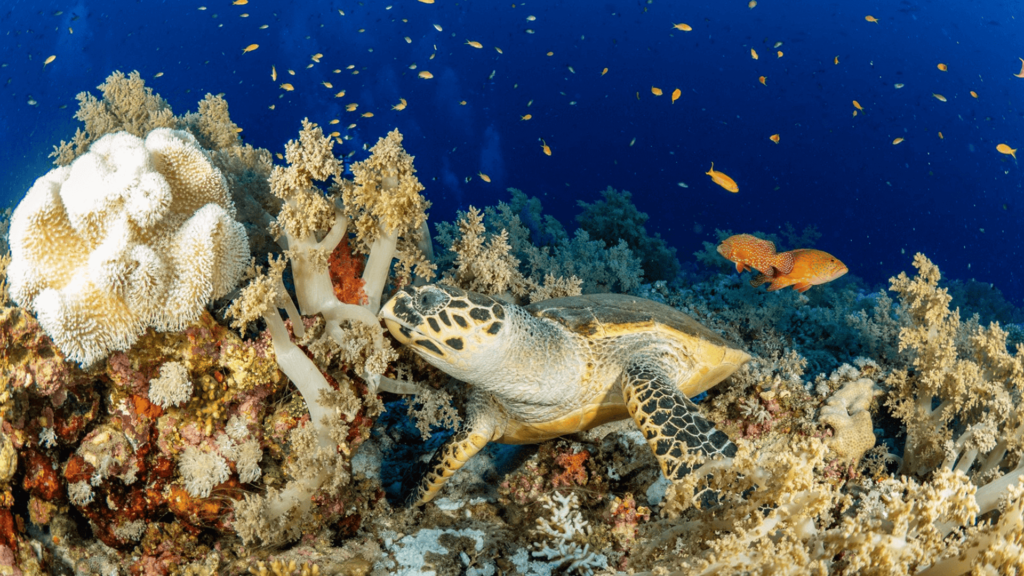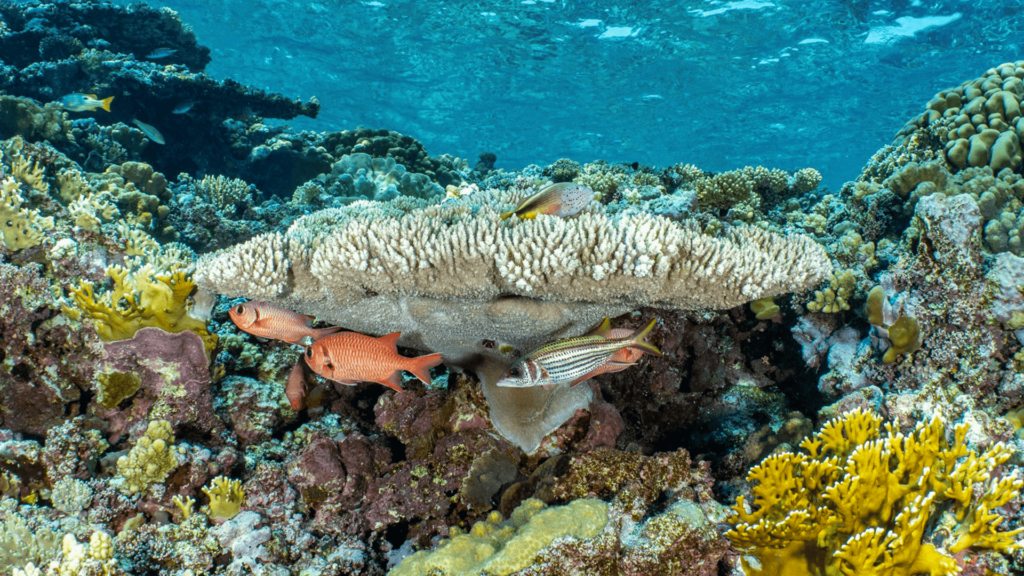
Sailing and diving in one of the most beautiful dive spots in the world, the Red Sea offers so many things that you can explore. You can dive anytime you want because the water is clean and there is lots of unique sea life in each period. Egypt Liveaboard diving takes you to faraway places that day boats can’t get to. This makes it the best option for serious divers who want to have amazing underwater adventures.
In this area you can experience some world-class diving that doesn’t require advanced skills and is friendly for all levels of divers, making it easy for European and Asian travellers to have amazing memories. A Red Sea Diving Liveaboard has everything that all divers want to see and do, from famous wreck sites and encounters with apex predators to beautiful coral gardens.
This Blog will tell you what makes Egypt liveaboard diving so special, from hammerhead aggregations and historic shipwrecks to the unique onboard experience that maximizes your time beneath the waves.
Dive Into Your Red Sea Takeaways
- Pelagic Encounters: Find hammerhead, oceanic whitetip, manta, and, to the rare chance to see blue whales at an exclusive spot.
- Historic Wreck Adventures: Explore legendary, well-preserved shipwrecks like the SS Thistlegorm, Rosalie Moller, and Carnatic.
- Vibrant Coral Gardens: Enjoy colorful reefs, from Elphinstone to St. John’s, with macro and wide-angle photo opportunities.
- Life Onboard: Experience liveaboard life — daily multi-dives, magical night dives, premium facilities, and camaraderie with fellow divers.
- Beyond Diving: Add a cultural touch with cuisine, traditional markets, and even ancient Egyptian historical sites on land.
Giants of the Deep: Diving in Egypt with Pelagic Species
In the Red Sea, we can find some of the world’s most fascinating pelagic encounters, such as The Brothers Islands and Daedalus Reef, renowned for their rich marine life, including Hammerhead Sharks, whose exotic schools roam and inhabit the coral walls in their magnificent and beautiful patterns.
If you’re a daring underwater photographer, diving in the Red Sea is a great choice. On the Egypt Diving Liveaboard, you can see oceanic whitetip sharks swimming across the blue waters, their white fins slicing through the clear water. This is a treasure trove for underwater photographers.
Are you thinking about seeing or seeking opportunities to capture photos with pelagics?, or larger animals like manta rays actively swimming among the reefs or blue whales surfacing during periods of abundant plankton, spring is the perfect time for you to experience Egypt liveaboard diving. Spring waters tend to be warm, ideal for these underwater animals.
Because these places are so far away, only Egypt liveaboard diving companies can consistently get to them. This means that real pelagic fans need to take multi-day journeys.
The Red Sea’s Famous Wrecks: Diving Through History
The SS Thistlegorm is the best wreck to dive in the Red Sea. The Red Sea’s peculiar conditions have kept this WWII cargo ship, which sank in 1941, in amazing shape. Motorcycles, vehicles, and military supplies make an underwater museum that takes divers back in time.
Recreational divers can still dive on wrecks in the Red Sea since the depths are good and the visibility is great. The Rosalie Moller and Carnatic both have their own stories and artefacts that make maritime history come to life.
The warm, salty waters of the Red Sea are great for preserving things, which is why these underwater time capsules are still there for modern explorers to find. It takes training to go into cargo holds and engine rooms, but it gives divers fascinating historical experiences.
Coral Gardens Beyond the Crowds: Red Sea Reef Diving
Elphinstone Reef and the St. John’s area are home to colourful soft coral formations that make rainbows of colour underwater. Egypt liveaboard diving lets you dive on beautiful reefs with little effect from divers, which keeps these coral gardens healthy and colourful.
There are a lot of chances to take pictures of both macro and wide-angle topics. Tiny nudibranchs hide among coral polyps, and reef sharks patrol the drop-offs. This makes for a lot of different photography chances on each dive.
Each dive site is different because of its biodiversity hotspots. There are so many different kinds of marine life, from pygmy seahorses to Napoleon wrasse, that every dive exposes something new. Night diving changes known reefs into strange places where animals that were hiding during the day come out.
Life Aboard: The Egypt Liveaboard Diving Experience

A normal day starts before daybreak with dive briefings and getting the gear ready. Multiple dives during the day provide you the most time on the bottom, and surface intervals give you time to relax and eat between underwater excursions.
When you dive at night, you can see marine life that you wouldn’t see during the day. Octopuses hunt on coral heads, moray eels come out of their daylight homes, and bioluminescent plankton makes magnificent light shows in the nighttime.
Sharing trips with other diving fans is a great way to make friends that last. Meal times become chances to talk about what you’ve found underwater and make plans for where to dive next with other travellers who share your interests.
Premium operators make sure that each visitor gets personal attention by having a lot of staff and top-notch scuba gear. This keeps safety and comfort at the top of the list during the trip.
Beyond the Depths: Culture along the coast of Egypt
Ports of departure like Hurghada and Marsa Alam provide you a chance to see Egyptian culture before or after your diving trips. Cultural immersion goes beyond diving with traditional markets, real food, and historical sights.
Adding visits to historical places like the Valley of the Kings or Luxor’s ancient temples before or after diving tours makes them more educational. The underwater historical experiences go wonderfully with Egypt’s rich archaeological history.
Egypt is known for its warm friendliness, which can be found in coastal towns and on liveaboard crews. This makes for friendly environments that make travel more enjoyable.
Planning Your Perfect Red Sea Diving Adventure
Choosing itineraries depends on experience level and interests. Wreck-focused routes suit history enthusiasts and advanced divers, while reef-focused journeys appeal to newer divers and marine life photographers.
Seasonal recommendations vary based on objectives. Cooler months provide comfortable conditions for wreck penetration, while warmer periods offer optimal pelagic encounters and extended bottom times.
Practical packing advice includes multiple daily dive considerations and varying conditions. Wetsuits, underwater cameras, and certification cards require careful preparation for successful Red Sea diving trips.
Certification requirements differ between dive sites. Advanced Open Water certification opens access to deeper wrecks, while basic Open Water allows exploration of stunning reef systems and shallower historical sites.
The Timeless Call of the Egypt Liveaboard Diving
Egypt liveaboard diving combines historical significance, marine biodiversity, and accessibility in ways few destinations can match. The unique blend of ancient maritime history and thriving marine ecosystems creates underwater experiences that satisfy diverse diving interests.
A liveaboard experience maximizes diving time while providing comfort and cultural immersion. Professional crew members ensure safety standards while sharing local knowledge that enhances every aspect of the journey.
The time has come to book your Red Sea adventure and experience these underwater treasures firsthand. Whether drawn to hammerhead encounters, historical wrecks, or pristine coral gardens, Egypt’s underwater realm awaits your exploration.Are you ready to start organising your diving trip to Egypt? Contact Dune Liveaboard’s Team today to learn how their top-notch liveaboard diving trips in Egypt will turn your underwater excursions into moments you’ll never forget.



